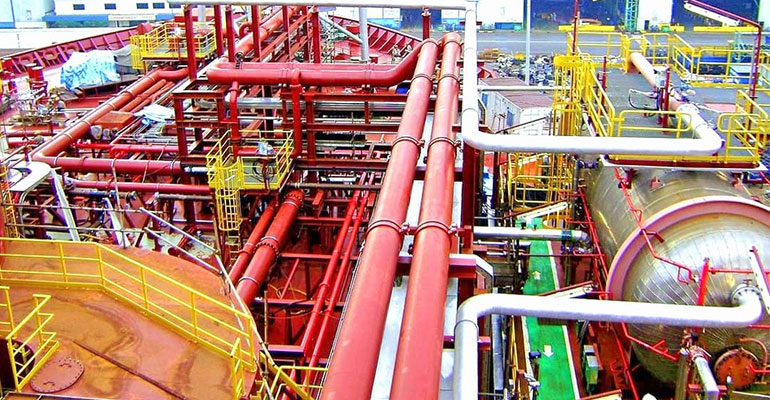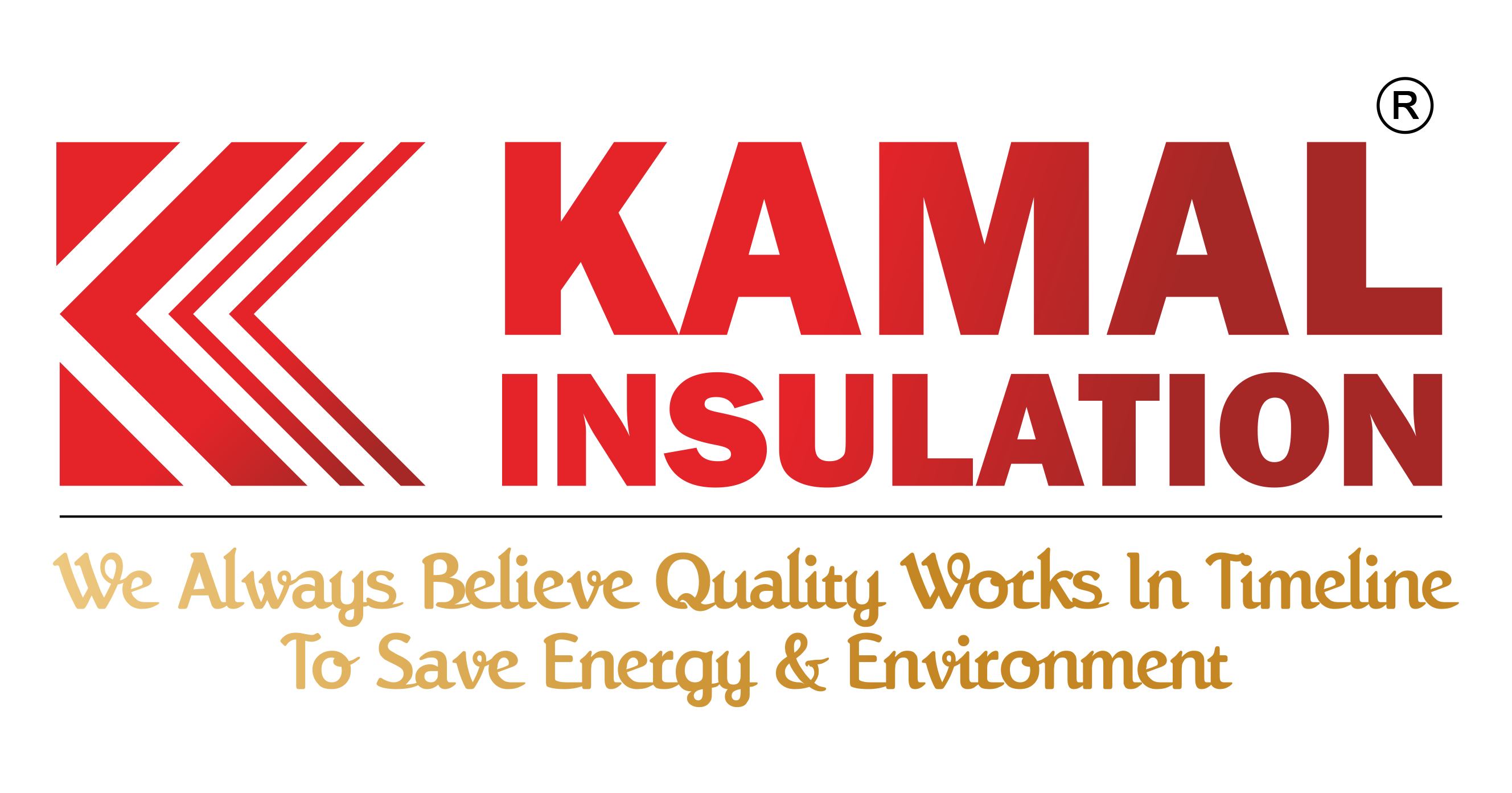
MECHANICAL FABRICATION
Mechanical insulation has long been underutilized and its importance in the overall mechanical system unappreciated. Many engineers who have devoted far too little time on insulation material selection and specifications don’t consider mechanical insulation an engineered system. For those who understand mechanical insulation’s importance, many don’t know where to begin the process of designing systems and creating specifications. This article will identify important steps in designing insulation systems and creating comprehensive specifications.
Although the main focus of this article is specifying mechanical insulation, system design concepts must be addressed to set the stage. Also, designing and specifying are overlapping tasks with the common ground being product selection.
System Design
Designing insulation systems involves listing and prioritizing criteria; then selecting materials and calculating insulation thickness that meet those criteria. This design process is required for each item to be insulated and for each environment in which each item exists. What follows is a brief overview of some points covered in the National Insulation Association’s National Insulation Training Program (NITP).
Why Insulate
The first task in designing insulation systems is to document the answer(s) to "why insulate?" There are many reasons to insulate, but most assume the main reason is to conserve energy. The following is a partial list of reasons to insulate in addition to energy conservation:
- Protect equipment and personnel.
- Increase process efficiency.
- Prevent condensation.
- Prevent excess heat in fire hazard areas.
- Control noise.
- Maintain temperature.
- Reduce greenhouse gas emissions.
- Maximize return on investment.
- Improve process control and efficiency.
An unbelievable amount of energy is lost through uninsulated valves, bare pipes, and defective insulation. NIA’s Insulation Energy Appraisal program states that uninsulated surfaces have a heat loss 20 times higher than properly insulated surfaces. This program also points out that insulation is the most effective technology available today that allows energy users to conserve energy, save money, and preserve the environment; and that return on investment often is less than six months.
Storage Tank fabrication and erection
Two types of storage tank erection methodology have become widely accepted and popular. The first one is the Conventional Method of Tank Erection & the other is the Tank Jacking method. Both of these tank erection methods are accepted by the API 650 and constructor. The selection of tank erection method basically depends on the site location or workshop where we are making these tanks.
Conventional Method of Tank Erection
In the conventional methods, cranes are used for tank erection as a sheet by sheet method. At first, the bottom and annular plates are erected. Then the lower course shell is erected and finally, the upper course shell is erected.
Tank Erection by Jacking Method
Jacking method is the advanced form of tank erection.
A number of hydraulic Jacks are placed inside the tank to be erected.
A system of hydraulic pressure hoses interconnects the hydraulic jacks which are energised by the action of a hydraulic pump.
- Power Pack Machine : This Machine is used to lift the Jack. This machine Pumps the oil to Jack through the hose pipes to lift the jack.
- Stay Pipes : Also known as supporting pipes; These pipes provide support to jack and trestle pipes. Basically these pipes are supporting the vertical trestles to maintain the verticality.
- Trestle Pipes : These are the vertical members in the Jacking system that carries loads of Jacks. While installing this assembly we need to take extra care of these vertical members so that verticality of the Tank is maintained. Jacks Move over the Trestles by teeth. These get support from base plates in the Tank bottom.
Annual maintenance contracts on integrated basis
An annual maintenance contract is an agreement between a company and a provider that sets expectations for the ongoing maintenance of machinery or property that the company purchases from the provider.
Operation
Operation is a practical work to produce products or the way of a part or an entire of machine, system, or plant work together smoothly and safely to produce products in accordance with the procedures.
Plant Operation is the managing and controlling the equipment, facilities, systems, or plants in industrial and manufacturing processes to produce desired products that ensures the effective implementation and efficient, safety, and reliable process operation.
Maintenance
Maintenance is the process of maintaining or preserving activities that performs equipment or facilities to minimise the possibility of damage or the lowering of performance quality because of corrosion, contamination, or deterioration for the continuous operation. The Maintenance activity is to retain facilities in a serviceable condition by functional checks, repairing, or replacing of necessary devices, equipment, machinery, etc.
Maintenance Readiness is a maintenance programmes that covers the maintenance planning and implementation for the start-up and ongoing operations.
What is a shutdown project?
Turnarounds and Shutdowns are major projects that require that require sound planning, execution and control. They directly affect the bottom line of the company. Shutdown projects are usually short in duration, from 1 month up to 6 months, and require significant deployment of experienced personnel.
Hot Insulation Materials
Removable insulation is specifically designed to insulate piping systems transporting gas and substances at high temperatures. The materials used to construct the insulation work to prevent your pipes from overheating, while keeping the warmth inside the pipe. This helps to cut down on energy bills for your facility, saving you money in the long run.
So, what materials are used during circumstances that require hot insulation? Well, that depends on the intended purpose of the pipe being insulated. There is a laundry list of materials to choose from all with different purposes. Below are 3 common materials:
- Cray Flex: This material has a high thermal, heat and chemical resistance, while still produced from high quality raw materials.
- Resin Bonded Rockwool: Used in both cold and hot insulation, resin bonded rockwool has high thermal, chemical and heat resistance with an unmatched dimensional stability.
- Spiral-wrap Fiberglass: This type of fiberglass is difficult to install, but extremely inexpensive for your hot insulation needs. It both keeps the contents being transported at the proper temperature, while ensuring the excess heat remains within the piping system.
Cold Insulation Materials
Just like hot insulation materials, some of the materials used to produce cold insulation vary dependent upon the system of pipes they are insulating. Therefore, the materials used in either hot or cold insulation are dependent on the customization of the particular piping system. Two common materials used in cold insulation are:
- Polyurethane Foam: Perfect for handling low thermal conductivity and substances with below freezing temperatures. Polyurethane foam also allows for low smoke emission and low water vapor permeability.
- Rubber Foam: Rubber foam is also often recommended for condensation control as the closed cell technology is highly resistant to moisture vapor.
With chilled insulation, keeping the cold in is as important as keeping the heat out. There are many types of insulation used on chilled water pipes. The two most popular are foam glass and rubber insulation or Armaflex. Although a little more difficult to work with than pre molded fiberglass, when installed correctly, these materials do a great job of stopping condensation and preventing energy loss.
Industrial Sand
Industrial sand is a term normally applied to high purity silica sand products with closely controlled sizing. It is a more precise product than common concrete and asphalt gravels. Silica is the name given to a group of minerals composed solely of silicon and oxygen, the two most abundant elements in the earth’s crust. In spite of its simple chemical formula, SiO2, silica exists in many different shapes and crystalline structures. Found most commonly in the crystalline state, it also occurs in an amorphous form resulting from weathering or plankton fossilization.
Quartz is the most common silica crystal and the second most common mineral on the earth's surface. It is found in almost every type of rock; igneous, metamorphic and sedimentary. While quartz deposits are abundant, and quartz is present in some form in nearly all mining operations, high purity and commercially viable deposits occur less frequently. Silica sand deposits are most commonly surface-mined in open pit operations, but dredging and underground mining are also employed. Extracted ore undergoes considerable processing to increase the silica content by reducing impurities. It is then dried and sized to produce the optimum particle size distribution for the intended application.
For industrial and manufacturing applications, deposits of silica yielding products of at least 95% SiO2 are preferred. Silica is hard, chemically inert and has a high melting point, attributable to the strength of the bonds between the atoms. These are prized qualities in applications like foundries and filtration systems. Quartz may be transparent to translucent and has a vitreous luster, hence its use in glassmaking and ceramics. Industrial sand’s strength, silicon dioxide contribution and non-reactive properties make it an indispensable ingredient in the production of thousands of everyday products.
Grit Blasting
Grit blasting is a process where abrasive particles are accelerated and forcefully directed against a surface. These high-speed abrasive particles remove contaminants from the material's surface and condition the surface for subsequent finishing.
The impact of the grit on the metal surface puts the surface layer into compression, and this effect can be beneficial, for example, in reducing stress corrosion cracking in aluminum alloys.
Panting for Pipe lines
Pipelines are a crucial infrastructure component in the modern transportation of water, oil, gas, and other liquid chemical compounds. Yet for all their helpful function, there’s no denying that miles and miles of above ground pipeline can become a bit of an eyesore. A fresh coat of paint can improve the looks of your pipes while allowing them to perform at full functionality by improving corrosion protection.
Here at Alpine Painting we use nothing but the best coating materials for all of our pipeline painting jobs. Our epoxy & polyurethane coatings ensure that you’ll be receiving the best results available, providing a heavy duty and durable coating to all of your pipelines. Alpine’s outstanding safety record ensures that your projects will be in capable hands, and we pride ourselves on confined space safety program necessary for internal coating work inside pipelines, which is essential for long term corrosion protection.
Mechanical equipments
Mechanical engineers use a variety of handheld and digital tools to help them complete their tasks at work. Learning about the tools that mechanical engineers use can help you prepare for a career in engineering. In this article, we list the duties of mechanical engineers, provide tips for working as a mechanical engineer and describe mechanical engineer tools.
Steel is used in construction
The most common among the most common steel types in construction is definitely mild steel type, also known as plain carbon steel. Carbon steel is a type of steel that contains between 0.12 and 2% of carbon, which is the main alloying constituent.

